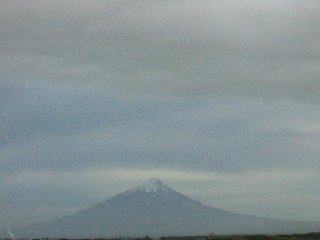
Those were the days my friend We thought they'd never end We'd sing and dance forever and a day We'd live the life we choose We'd fight and never lose For we were young and sure to have our way. La la la la... Those were the days, oh yes those were the days
Saturday, January 21
Steamed B B Q Pork Bao

JING CHAR SIU BAU (STEAMED BBQ PORK BUN) - a long history going back to between 221 and 234 B.C. when Juger Liang, a man renowned for his great wisdom, was prime minister of the Shu kingdom, now Szechuan province. On six successive occasions Liang successfully repelled the fearsome barbarian tribe commanded by Meng Huoh. The seventh time, both parties having fought honorably, Meng Huoh bowed before Liang's strategy and wisdom. Everyone joined in the great march back to the Shu kingdom. On the way they came to a river. According to barbarian tradition, in order to cross the river a human life first had to be sacrificed and the head thrown into the water to ensure that the current could be safely crossed. Liang, in his great wisdom, did not wish to kill an innocent man, since his ghost could return to claim other victims, and so he ordered his cook to prepare a large steamed round loaf shaped like a head which he threw into the river. Everyone made it across without incident. Since that day, and for a long time afterwards, little steamed buns were made in the shape of heads, more oval than round. These buns are called "mantow" or "mantou" which phonetically is the same word, referring both to buns and the heads of barbarians! Only the second written character differentiates them
Chow Mein - Mainstream Food Today

Chow mein. A Chinese-American dish made of stewed vegetables and meat with fried noodles. The term comes from Mandarin Chinese ch'ao mien', "fried noodles," and probably was brought to the United States by Chinese cooks serving the workers on the western railroads in the 1850s. The word first appears in print in 1900. Although most chow mein bears scant resemblance to true Mandarin cooking, it has become a staple in Chinese-American restaurants...
Tea - And You Thought There Was Just One Sort

Hot Tea, Cold Tea... Your choice. If you visit Taiwan or Hong Kong you can't help but notice the unique bubble teashops on every corner. Bubble Tea to Taiwan is what coffee or soda is to the U.S. One would think Bubble Tea is the national drink by its popularity. Bubble Tea originated in Taiwan in the early 1980's at a small tea stand.
Elementary school children would look forward to buying a cup of refreshing tea after a long, hard day of work and play. Tea stands were set up in front of the schools and would compete for business with the best selling tea. One concession owner became popular with her tea when she started adding different fruit flavoring to her tea. Because of the sweet and cool taste, children loved the taste. Soon, other concessions heard about the "unique" and popular tea, so they started to add flavoring to their teas. When adding flavor, the tea and flavoring needed to be shaken well for a good all around taste. This formed bubbles in the drink, which came to be known as "Bubble Tea."
In 1983 Liu Han-Chieh introduced Taiwan to tapioca pearls. The new fad was to add tapioca pearls into a favorite drink. Most of the time tapioca pearls were served in cold infused tea. After the tea and flavor were shaken well, it topped tapioca pearls that were sitting on the bottom of a clear cup. The tapioca pearls also looked like bubbles, thus also became to known as "Bubble Tea." Bubbles floated on the top your drink and bottom of your drink.
Happy Chinese New Year 2006
Friday, January 20
Purple And Yellow Flowers - Rock Composition
King Edward Park
A Month Has Passed
Tuesday, January 3
Monday, January 2
New Year is Here - 2006
The start of the New Year and 3 children away in China. Dongguan is over - have visited the villages.
Subscribe to:
Comments (Atom)













